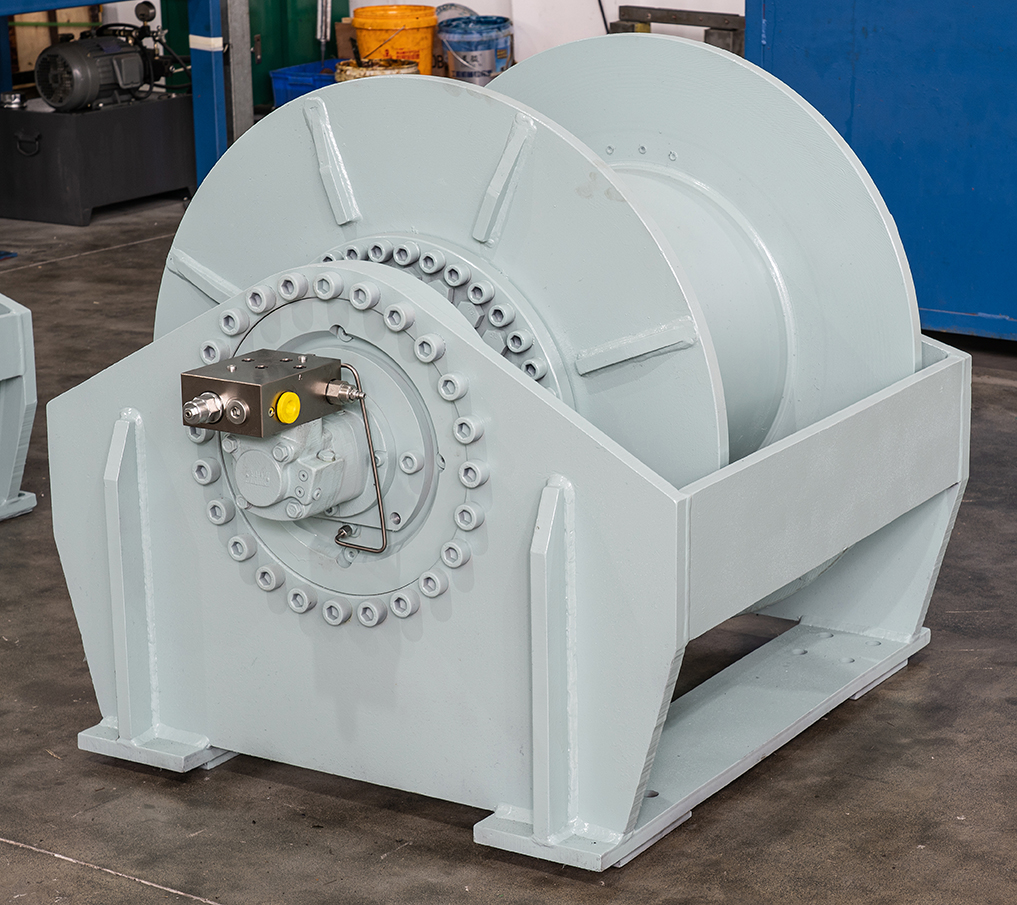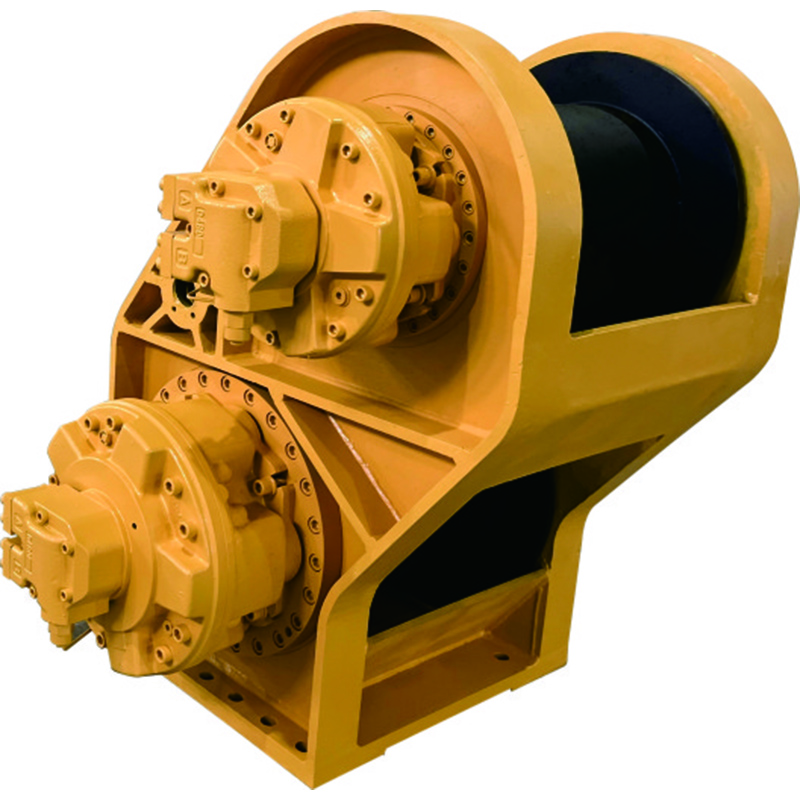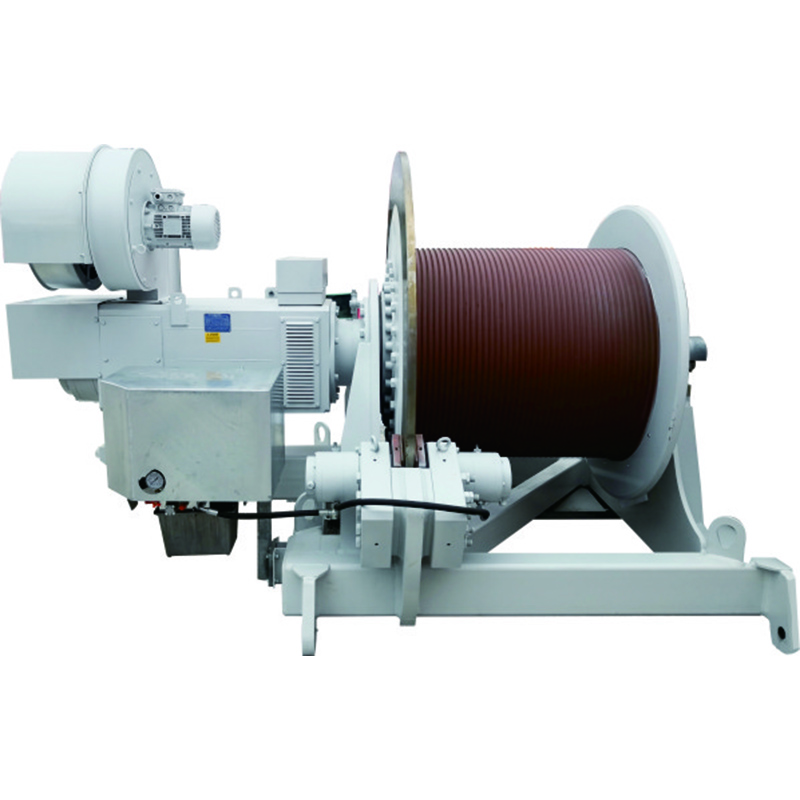Custom hydraulic winch systems play a vital role in industries requiring precision for diverse load capacities. Their integration addresses challenges like lifting efficiency and operational safety.
- Light-duty hydraulic winches perform well in small-scale projects, offering cost-effectiveness.
- Medium-duty winches excel in marine engineering hydraulic winch applications.
- Heavy-duty winches enhance efficiency in large-scale construction and mining.
Modern advancements, such as marine electric winch and marine electric windlass technologies, further solidify their importance across sectors like maritime and oil and gas, including the use of marine hydraulic windlass systems.
Key Takeaways
- Custom hydraulic winches are important for jobs like building and shipping. They are made to handle loads from 5 tons to 500 tons.
- Picking the right materials and motor strength is very important. Strong materials and good motors keep the winch safe and working well.
- A clear design plan, with needs checked and tests done, makes sure hydraulic winches work properly and stay reliable.
Hydraulic Winch Basics
Definition and Functionality
A hydraulic winch is a mechanical device designed to lift, pull, or position heavy loads using hydraulic power. It operates by converting hydraulic energy into mechanical force through a motor, which drives the winch drum. This drum winds or unwinds a cable or rope, enabling precise load handling. Industries such as construction, maritime, and mining rely on hydraulic winches for their ability to handle substantial loads with efficiency and reliability. Their adaptability to various environments makes them indispensable for tasks requiring controlled and consistent force application.
Hydraulic winches excel in scenarios where electric or manual systems may fall short. Their hydraulic motors provide superior torque, ensuring smooth operation even under extreme conditions. Additionally, their modular design allows for customization, enabling integration into specialized systems like ship decks or heavy-duty vehicles.
Key Components Impacting Load Capacity
The performance of a hydraulic winch depends on several critical components. The drum, motor, and control system play pivotal roles in determining load capacity. For instance, the drum’s diameter and material strength directly influence its ability to handle tension and prevent deformation. Customizable drum sizes, ranging from 200mm to 3m, cater to diverse operational needs, ensuring optimal performance across varying load requirements.
Research highlights the importance of control systems in enhancing load capacity. Advanced strategies, such as load sensing and valve control, optimize hydraulic energy delivery, ensuring efficient operation. Additionally, finite element analysis (FEA) of key components, like the main shaft, reveals how stiffness and geometric constraints impact performance. By addressing these factors, manufacturers can design winches capable of handling loads from 5 tons to 500 tons with precision and safety.
The hydraulic motor also plays a crucial role. Studies show that the wire-load model significantly affects motor performance. Properly engineered control systems prevent resonance by managing natural frequencies, ensuring stability during operation. These innovations underscore the importance of component design in achieving superior load-handling capabilities.
Designing for Load Capacity
Material Strength and Motor Power
Material strength plays a critical role in determining the load capacity of a hydraulic winch. Engineers select high-grade materials, such as alloy steel or carbon steel, for components like the drum and frame to ensure durability under extreme stress. These materials resist deformation and fatigue, enabling the winch to handle heavy loads consistently. Finite element analysis (FEA) further validates the structural integrity of these components, identifying potential weak points and optimizing designs for maximum strength.
Motor power complements material strength by providing the necessary torque to lift or pull loads. Hydraulic motors, known for their high efficiency and reliability, are tailored to match the winch’s load requirements. For lighter loads, compact motors with moderate torque suffice. Heavy-duty applications demand motors with higher displacement and advanced control systems to ensure smooth operation under substantial pressure.
Tip: Combining robust materials with a well-calibrated motor ensures a hydraulic winch operates safely and efficiently across diverse load capacities.
Design Variations for 5-Ton vs. 500-Ton Winches
Designing hydraulic winches for varying load capacities requires significant adjustments in size, structure, and functionality. A 5-ton winch, often used in light-duty applications, features a compact drum and a smaller hydraulic motor. These winches prioritize portability and cost-effectiveness, making them ideal for tasks like vehicle recovery or small-scale construction.
In contrast, a 500-ton winch demands a more robust design. The drum diameter may exceed 3 meters, accommodating thicker cables to handle immense tension. The frame and mounting system are reinforced to withstand the forces exerted during operation. Hydraulic motors for these winches are engineered with higher displacement and advanced cooling systems to maintain performance under prolonged use.
| Feature | 5-Ton Winch | 500-Ton Winch |
|---|---|---|
| Drum Diameter | 200mm – 500mm | 2m – 3m |
| Material | Standard alloy steel | High-strength carbon steel |
| Motor Type | Compact hydraulic motor | High-displacement hydraulic motor |
| Applications | Light-duty tasks | Heavy-duty industrial operations |
These design variations highlight the adaptability of hydraulic winches to meet specific operational needs. Engineers leverage customization options, such as drum size and motor configuration, to ensure optimal performance across different load capacities.
Note: Tailored designs for 5-ton and 500-ton winches demonstrate the versatility of hydraulic winch systems in addressing diverse industry requirements.
Customization and Integration
Steps in Custom Hydraulic Winch Design
Designing a custom hydraulic winch involves a systematic approach to ensure optimal performance and compatibility with specific operational needs. Each step in the process addresses critical factors, from initial planning to final implementation.
- Requirement Analysis:
Engineers begin by assessing the operational requirements. This includes determining the load capacity, environmental conditions, and specific application needs. For instance, a winch designed for marine use must withstand corrosive environments, while one for mining operations may require enhanced durability. - Component Selection:
Selecting the right components is crucial. Engineers evaluate the drum size, motor type, and control systems based on the desired load capacity and operational parameters. For example, a 500-ton winch may require a high-displacement hydraulic motor and a reinforced drum to handle extreme tension. - System Design and Simulation:
Advanced tools like finite element analysis (FEA) are used to simulate the winch’s performance under various conditions. This step identifies potential weak points and ensures the structural integrity of the design. - Prototyping and Testing:
A prototype is built to validate the design. Engineers conduct rigorous testing to evaluate the winch’s performance, safety, and reliability. Adjustments are made as needed to meet the required standards. - Final Production and Quality Assurance:
Once the design is finalized, the winch is manufactured using high-quality materials. Quality assurance processes ensure that the final product meets all specifications and industry standards.
The table below outlines key metrics considered during the design process:
| Metric | Description |
|---|---|
| Volume and Flow Rate | Estimate the fluid volume and desired flow rate to guide pump and motor selection. |
| Temperature Range | Ensure equipment can handle temperature fluctuations based on the environment and application. |
| System Layout and Size | Consider space limitations and opt for compact or specially designed equipment if necessary. |
| Compatibility with Existing | Ensure new equipment is compatible with existing systems in terms of fittings and pressures. |
| Budget and Cost of Ownership | Account for total cost of ownership, including maintenance and energy consumption. |
| Operating Pressure | Determine maximum and average operating pressures for safety and durability. |
| Future-proofing | Consider scalability for future expansions or changes in the system. |
| Pump Efficiency | Prioritize pumps with higher efficiency to reduce energy costs and wear. |
| Maintenance Requirements | Evaluate pumps based on robustness and service intervals to minimize downtime. |
Tip: Following a structured design process ensures that the hydraulic winch meets both current and future operational demands.
Integration with Specialized Systems
Integrating a hydraulic winch into specialized systems requires careful planning and execution. The goal is to ensure seamless operation and compatibility with existing equipment.
- System Compatibility:
Engineers assess the compatibility of the winch with the existing system. This includes evaluating fittings, pressure ratings, and control interfaces. For example, a winch integrated into a ship deck must align with the vessel’s hydraulic system to ensure efficient operation. - Custom Adaptations:
Customization plays a key role in integration. Engineers may modify the drum size, motor configuration, or mounting system to fit the specific requirements of the application. For instance, a winch designed for a special vehicle may feature a compact layout to accommodate space constraints. - Control System Integration:
Advanced control systems enhance the winch’s functionality. Features like load sensing and remote operation improve efficiency and safety. These systems are tailored to the application’s needs, whether it’s a mining operation or a maritime application. - Testing and Validation:
After integration, the system undergoes extensive testing to ensure proper functionality. Engineers verify that the winch operates smoothly under various conditions and meets all performance criteria. - Training and Support:
Operators receive training to ensure they can use the winch effectively. Manufacturers also provide ongoing support to address any issues and ensure long-term reliability.
Note: Proper integration not only enhances the performance of the hydraulic winch but also extends the lifespan of the entire system.
Custom hydraulic winch integration ensures precise performance across diverse load capacities, from 5 tons to 500 tons. Industries benefit from tailored designs that enhance efficiency and safety. Exploring customized solutions allows businesses to address unique operational challenges effectively. Investing in these systems supports long-term reliability and optimized functionality for specialized applications.
Post time: Apr-15-2025



